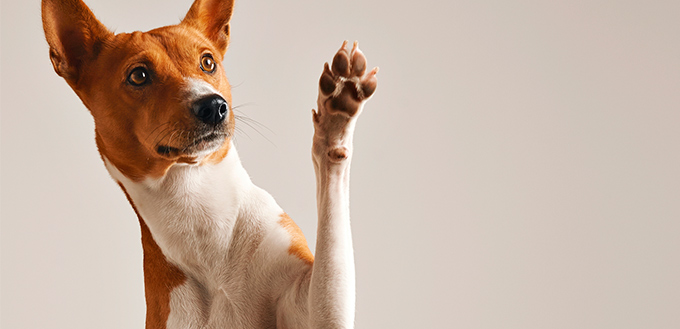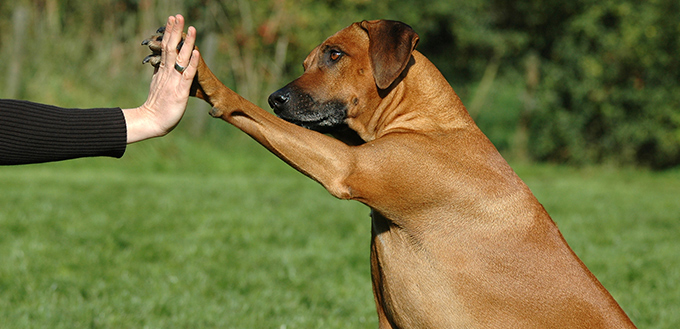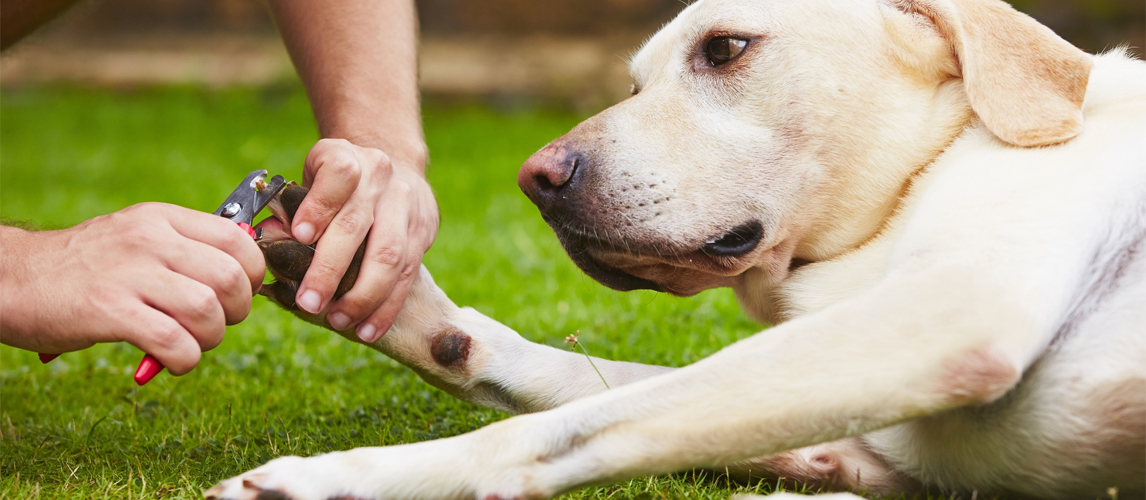There are many fascinating things about our furry pals. Just take a look at your dog’s feet and you will see four toenails sticking out from their paws. Now, here’s the interesting part, you will even see an extra toenail hanging on the inner aspect of the dog’s front feet. In some breeds, they have the same ‘hanging’ toe on their hind feet. In rare instances, you might even see double the extra toes. But what does this dog extra toe mean? And why do dogs have it?

The Dewclaw
This extra toe that you see in your dog’s feet is called the ‘dewclaw’. It is analogous to our thumb and big toe, just in case your dog also has a dewclaw in its hind feet. If you look closely at the arrangement of your dog’s paws, those that are in constant contact with the ground whenever they are in an upright position are roughly equivalent to our index, middle, ring, and pinky fingers. But, where’s the thumb or big toe? This is where dewclaws come in.
When somebody asks you what are dewclaws, you can simply tell them that this is the dog equivalent of our thumb and big toe (in some breeds like the Briard and the Great Pyrenees). Interestingly, the Great Pyrenees also has double dewclaw at the rear feet. This is an inherited trait known as polydactyly whereby there are not one but two bony digits that make up the canine big toe.
One of the things that you have to determine about dewclaws is whether they are firmly attached to your dog’s foot or not. This is one of the points raised by those who say that dewclaws should be removed from the dog’s foot. If we are to liken it to humans, it would be like removing our thumb or big toe. Going back, if you are able to wiggle the dewclaw only a bit, then there’s a good chance that this extra doggie thumb is connected to the dog’s leg by virtue of bones. However, if the dewclaws are very mobile or you can easily wiggle them, there’s a fair chance that it is only attached by skin. If such is the case, then it won’t have any useful purpose.
What It’s For
We mentioned above that it is important to make a distinction whether the dewclaw is slightly movable or very movable. The reason for this is quite simple. If it is very mobile, then it won’t really have any useful function. It is for this reason that dog dewclaw removal may be performed, but not absolutely necessary. Some folks would want it removed because of the risk it poses to the dog. If the dog runs and the dewclaw gets caught in a brush or twig, it may be cut off from its attachment since it is only connected by skin. This can lead to an open wound whereby the possibility of infection is high.
However, if the dewclaw has very limited mobility, it usually serves a purpose. Generally, it is used by dogs to lightly hold objects that they want to chew. Carefully watch your dog chew on its bone and you will see that the front dewclaws serve as additional contact points for the dog to ‘hold’ the bone or the dog chew.
Related Post: Best Dog Bones and Best Dog Chews
More importantly, there are dogs that depend on front dewclaws for their work. Hunting dogs and herding dogs are known to rely on nimble footwork to allow them to chase prey or their herd. This is especially true when they run at high speeds on unusually slippery surfaces. Front dewclaws have been taken to improve the traction of these types of dogs. Additionally, it is now believed that dewclaws help dogs stabilize their wrist joints.
Should it Be Removed?
Do all dogs have dewclaws? They should. Given that dewclaws are analogous to human thumbs, these are a natural part of the dog’s body; unless, of course, they were born without it in the same manner that some individuals can be born without a thumb or any of their 5 fingers. The whole point here is that, since dewclaws are normal parts of the dog’s anatomy, then there really is no point in removing it.
We already said that true dewclaws – those that are attached to the legs by bones and not just skin – have several functions including holding objects, wrist joint stabilization, and additional traction, among others. If it has a purpose, then why would you want to remove it?
Of course, if there is a medical need for its removal such as the presence of a cancerous tumor or even serious injuries, then it should be removed. Veterinarians have to weigh the pros and cons of removing the dewclaws.
If in case the dewclaws have to be removed, it should be done before the puppy reaches the age of 5 days. Most dog owners who want the dewclaws of their pets removed do so as a matter of improving the dog’s appearance in dog conformation competitions. But if you have a Great Pyrenees, know that removing the dewclaw is a disqualification.

Caring for Your Dog’s Dewclaws
Dewclaws have to be cared for just like the rest of the dog’s toenails. This means that it has to be trimmed and filed as well using appropriate dog nail clippers and grinders. This is especially the case for dogs that lead an otherwise sedentary lifestyle. Since the dewclaws of these dogs are not in constant contact with the ground, there is a tendency that they will grow as long as the other toenails. Hence, these have to be clipped more often.
If your dog happens to be an extremely active herding or hunting dog or even a sled dog, then clipping the dewclaws is not necessary. It should be understood that dewclaws also tend to get in contact with the ground every time these dogs run. This frequent contact with the ground can actively wear down the dewclaws, eliminating the need for regular trimming or clipping.
Dewclaws are a dog’s thumbs and big toes. These are normal parts of the dog’s anatomy and have a number of functions that can help your pet in certain ways.
Sources:
- Jennifer Coates, DVM, 5 Things You Need to Know About Dog Dewclaws, PetMD
- Dr. Marty Becker, DVM, Does Our Puppy Need His Dewclaws?, VetStreet






